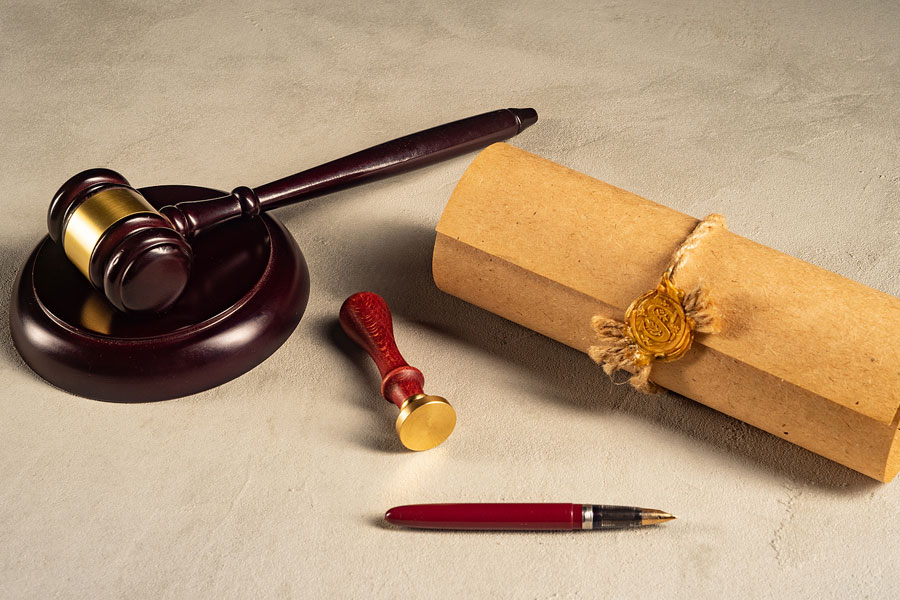An estate trustee, or an executor, can be named in a Will or can be appointed by the Court. There are times, however, when a person may seek to remove an estate trustee, with or without sufficient grounds, where there are disagreements over how an estate should be administered.
The Courts are generally reluctant to remove an estate trustee, preferring to respect the deceased’s right to choose their estate trustees in their last Will. The Court will typically only remove an estate trustee in limited circumstances.
Process of Removing an Estate Trustee
The Court has inherent jurisdiction to remove an estate trustee. An Application to remove an estate trustee must be brought under section 5(1) and 37(1) of the Trustee Act[1] and under rules 14.05(3)(a) and 75.04 of the Rules of Civil Procedure[2]. Case law demonstrates that the Court’s power will only be exercised in exceptional circumstances.
Rule 75.04 of the Rules of Civil Procedure provides that any person appearing to have a financial interest in an estate may bring an application to revoke a certificate of appointment of estate trustee. The court may revoke the certificate of appointment where
- The certificate was issued in error or as a result of fraud on the court;
- The appointment is no longer effective; or
- The certificate should be revoked for any other reason
Similarly, 37(3) of the Trustees Act allows anyone with financial interest in the estate of a deceased to bring an application for removal of an executor.
An application for removal of an estate trustee is not likely to be successful unless the Applicant has evidence of sufficient grounds for removal.
Grounds for Removal
The question of removal comes down to whether the future of the estate is likely to be compromised if the court does not order the removal of the acting estate trustee. Removal of an estate trustee will only be ordered where the evidence demonstrates that the estate is at risk of not being administered properly.
The principles to be considered were set out by the Court in Radford v Radford[3]. They were summarized in the recent decision, Henderson v Sands[4], as follows:
- The court should not interfere lightly with the testator’s choice of estate trustee;
- Such interference must be not only well justified but must amount to a case of clear necessity;
- Removal of an estate trustee should only occur on the clearest of evidence that there is no other course to follow;
- The court’s main guide is the welfare of the beneficiaries;
- It is not every mistake or neglect of duty that will lead to removal. It must be shown that the non-removal will likely prevent the trust from being properly executed. The acts or omissions must be such as to endanger the trust property or to show a want of honesty, capacity or reasonable fidelity;
- Removal is not intended to punish past misconduct but to protect the assets of the trust and the interests of the beneficiaries; past conduct that is likely to continue will often be sufficient to justify removal; and
- Friction alone is not itself a reason for removal. The question is whether it would be difficult for the trustee to act with impartiality. The friction must be of such a nature or degree that it prevents, or is likely to prevent, the proper administration of the trust.
Other decisions highlight additional important considerations for any removal application.
In Chambers Estate v Chambers[5], the Court of Appeal confirmed that there is a high threshold for removal and that an estate trustee should only be removed with the clearest of evidence.
In Kinnear v White[6], the Court described removing an estate trustee as an “extreme remedy.”
In Crawford v Jardine, the Court held that mere animosity between an estate trustee and the beneficiaries of an estate is not alone grounds for removal. Evidence must show that the animosity is likely to prevent the administration of the estate in accordance with the wishes of the deceased. Animosity that developed after the death of the Deceased is weighed more favorably for removal of an estate trustee than animosity that previously existed[7].
In Buran v Craston[8], the Court discussed the standard of care of an estate trustee. The standard of care of an estate trustee is expected to be the standard of care of a person of ordinary diligence in managing their own affairs.
Summary
The Court does not take the question of whether to remove an estate trustee lightly. It will carefully consider the facts of the case to decide if there are sufficient grounds to remove an estate trustee. At Hummingbird Lawyers, we can assist you if you have a matter dealing with the removal an estate trustee.
For all other inquiries, please fill out this form and our Wills & Estates lawyer will get back to you
References and Footnotes
- Trustee Act, R.S.O. 1990, c. T.23 ↩
- R.R.O. 1990, Reg. 194: RULES OF CIVIL PROCEDURE ↩
- Radford v Radford 2008 43 ETR (3d) 74 ↩
- Henderson v. Sands, 2023 ONSC 897 (CanLII) at para 8. ↩
- Chambers Estate v. Chambers, 2013 ONCA 511 (CanLII) ↩
- Kinnear v. White, 2022 ONSC 2576 (CanLII) at para 7. ↩
- Crawford v. Jardine, [1997] O.J. No. 5041 (Ont. Ct. (Gen. Div.)) at para 20. ↩
- Baran v Cranston, 2020 ONSC 589. ↩


